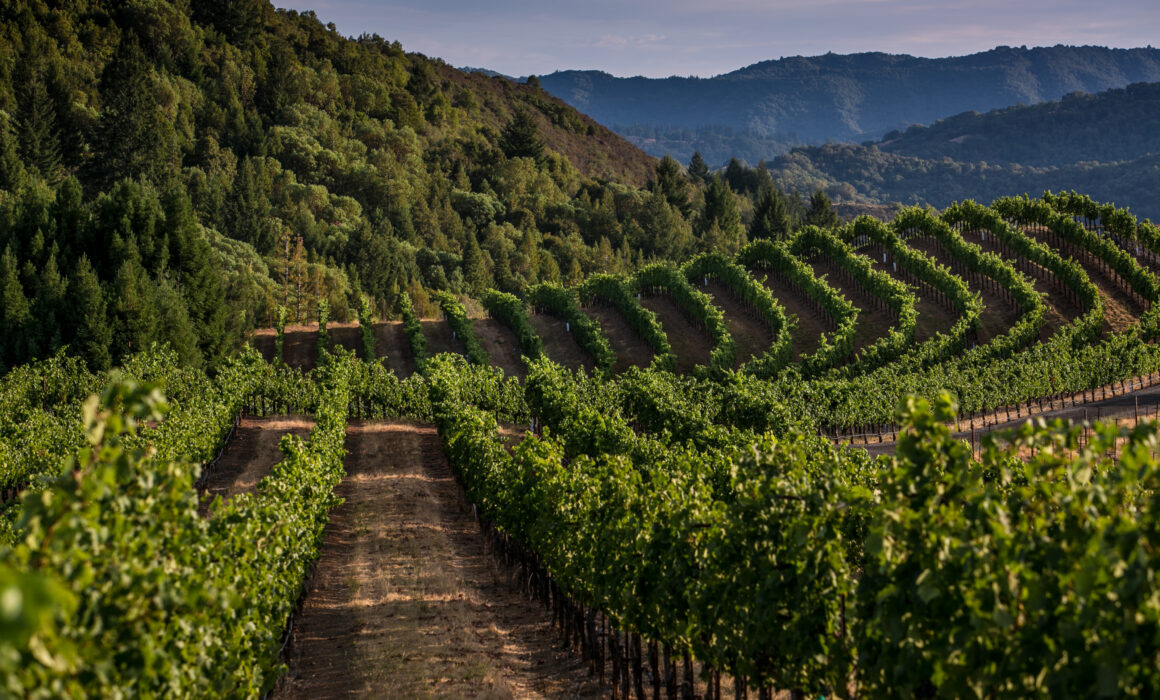1983: A Busy Year for Appellations
By Virginie Boone
Forty years ago, California wine appellations barely existed. Put on the world stage in 1976 by the Judgment of Paris, the Napa Valley wasn’t officially established as an American Viticultural Area (AVA) until 1981. Sonoma Valley quickly followed in 1982.
Then things really got busy. In 1983 six regions within Sonoma County were granted AVA status: Chalk Hill, Dry Creek Valley, Knights Valley, Los Carneros, Green Valley and Russian River Valley. (The Sonoma County Green Valley AVA’s name was changed to Green Valley of Russian River Valley in 2007.)
The Sonoma County Wine Library Association will host a panel discussion to talk about the 40-year history of each of these AVAs, this Sunday, November 12 from 3 p.m. to 5 p.m., led by Sonoma County Winegrowers’ very own Karissa Kruse.
Held in the Balletto Vineyards Reserve Room, it will feature a tasting of wines from each of the 40-year-old Sonoma County AVAs and feature speakers from Balletto Vineyards, Schug Carneros Estate, Knights Bridge Winery, Saini and Hartford Family Winery. A fundraiser for the library, it will also feature wine lots and experiences from each of the AVAs. Tickets cost $35 for members/$50 for non-members and $20 for students.
But back to 1983. Six new AVAs within Sonoma County came to life that year. What was going on?
Part of the onslaught was prompted by the Federal Government’s Bureau of Alcohol, Tobacco and Firearms (ATF), who in 1978 published a decision revising regulations that recognized definite viticultural areas within the United States to “allow the name of an approved viticultural area to be used as an appellation of origin on wine labels and in wine advertisements.”
A year later, in 1979, the ATF added another part called “American Viticultural Areas” to the Code of Federal Regulations, inviting “any interested person” to petition the ATF to establish a grapegrowing region as a viticultural area.”
The ATF also set out what a petition had to include:
- Evidence that the name of the AVA is locally and/or nationally known as referring to the area specified
- Historical or current evidence that the boundaries of the viticultural area are specified
- Evidence relating to the geographical features (climate, soil, elevation, physical features) which distinguish the proposed area from surrounding areas
- Specific boundaries of the viticultural area based on features found on USGS maps
With the invitation extended and clarity around requirements, it was off to the races for those looking to differentiate their wine regions, especially in Sonoma County.
Seven people petitioned the ATF to make Chalk Hill an official AVA, tracing the region’s history in grapegrowing in and around the town of Windsor back to 1855.
Though its 33 square miles of area overlapped into Alexander Valley and Russian River Valley, it was granted its own status and deemed “different from the surrounding areas of Alexander Valley, Dry Creek Valley and the Russian River Valley… the vineyards of the Chalk Hill area planted on lands which are gently rolling to steep and can be described as benchlands, tablelands and hills.”
Chalk Hill’s “white” soil, i.e., volcanic ash, was an additional differentiator, deposited as a result of volcanic activity from Mount St. Helena, the vineyards planted in soils “which are deep but lower in fertility than the soils in surrounding areas,” with the white soil contributing to “the high quality of the fruit produced.”
Dry Creek Valley, west of Healdsburg and Geyserville, was submitted for consideration by the Dry Creek Valley Association. Sixteen miles long and 2 miles wide at its widest point, it encompassed 80,000 acres in all, 20,500 acres of which were considered the “valley area.”
Of that, 5,000 acres were planted to grapes at the time (it’s about double that now), primarily to Zinfandel, whose history petitioners traced back to the 1800s. Distinguishing factors were said to be that Dry Creek Valley was “generally wetter, warmer and has a longer growing season than the main Russian River Valley to the south.”
At the same time, the moderating effect of fog made it cooler than areas to the north. Dry Creek Valley was also “distinguished on three sides by contact between the geologically younger alluvial material of the valley with the older indurated rock of the surrounding uplands.” These uplands “are composed of a geologically unique, gravelly material known as Dry Creek Conglomerate which is found nowhere else in Sonoma County.”
A group of 16 people called the Knights Valley Winegrowers Committee advocated for Knights Valley, supported by Johnson Turnbull Vineyards, a bonded winery in Oakville. Between the Alexander Valley and Napa Valley, Knights Valley consisted of 36,240 acres with only about 1,000 of them devoted to viticulture, with no wineries at the time, though there had been at least five pre-Prohibition, according to the petition.
Knights Valley ranges in elevation from 360 feet to 4,300 feet, including the highest point of all, Mount St. Helena. This was said to be an important differentiating factor – “the areas currently used for grape production are consistently higher in elevation than the grapegrowing areas in the adjacent Alexander Valley, Chalk Hill, Russian River Valley and Napa Valley areas.”
On the southern edge of Sonoma County straddling over to Napa Valley, the creation of Los Carneros was a bit more contentious. Beaulieu Vineyard, who submitted the original petition, wanted the boundaries to lie entirely within Napa County. They are also the ones who gave it the name though it was decided early on that “Carneros” and “Los Carneros” could be interchangeable.
What distinguished Los Carneros geographically more than anything else was its climate, the area “profoundly affected by intrusion of cool, marine air from (San Pablo Bay).” This made for a cool, lengthy growing season.
To get to agreement on where the boundaries should be drawn, a group of growers formed the Southern Sonoma Valley Ad Hoc Committee, with Jim Carter of Sebastiani Vineyards chairing. They rejected the western boundary originally proposed and instead proposed it be extended as far as the western boundary of the Sonoma Valley viticultural area. This is what ended up being approved, making Los Carneros the first (and only) AVA to reach across Napa and Sonoma counties.
A group calling themselves “The Appellation Committee” proposed a 150-square-mile area known as the Russian River Valley. As evidence to back up the name, the committee cited a historical text published in 1880 about Sonoma County mentioning four “great valleys,” Sonoma, Petaluma, Santa Rosa and Russian River. Wine labels began using the name Russian River Valley in 1970.
But climate was the deciding factor, with Russian River “a cool growing coastal area because of fog intruding up the Russian River and its tributaries during the early morning hours.”
Korbel asked for a change to the original boundaries to include its vineyard in Guerneville, a request that was accepted. The Russian River Valley was expanded again in 2005. In 2007, the Winegrowers and Vintners of Sonoma County’s Green Valley petitioned to change the name of the Sonoma County Green Valley AVA (in use since November 21, 1983) to Green Valley of Russian River Valley.
1983 AVAs: (Date of establishment, acreage at original establishment)
Chalk Hill (11/21/83, 21,120 acres)
Dry Creek Valley (9/6/83, 80,000 acres)
Green Valley of Russian River Valley (11/21/83, name changed in 2007, 19,010 acres)
Knights Valley (11/21/83, 36,240 acres)
Los Carneros (9/19/83)
Russian River Valley (11/21/83, 96,000 acres)


